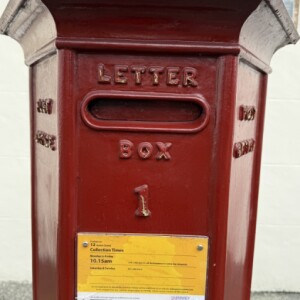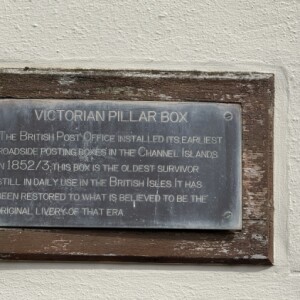The oldest surviving roadside posting box…
After yesterday’s Pride post box you have the oldest surviving pillar box in the British Isles. The plaque is in extras.
The silly thing about it is it was designed in the days when letters were smaller so the mouth is too small for a lot of today’s mail.
And for locals; let’s hope this historic post box survives better than our yellow phone boxes!!
My saying of the day is ‘Worse for wear’ (and I’m not because I was very abstemious last night though I do have a bottle of Vouvray chilling in the fridge now;-))
What's the origin of the phrase 'Worse for wear'?
The expression ‘worse for wear’ is something of a linguistic oddity in that it has endured a variety of different meanings, versions and spellings during its lifetime.
Anyone familiar with etymology will have come across the redoubtable John Heywood’s glossary A Dialogue conteinyng the nomber in effect of all the Prouerbes in the Englishe tongue. ‘Worse for wear’ is one of the older phrases in the language and Heywood included it in the book’s first edition in 1546:
Al thyng is the wors for the wearyng.
The meaning there is clear – ‘as things are used they deteriorate’. As it became established in the language ‘worse for wear’ developed into a synonym for ‘worn out’. At this stage the variant ‘none the worse for wear’ was coined, meaning ‘used but not worn out’ and also dragging along its misspelled ‘worst/ware/where’ versions. The English poet Charles Churchill used that expression, in a rather backhand compliment to his wife, in the poem The Ghost, 1794:
Some, in my place, to gain their ends,
Would give relations up and friends;
Would lend a wife, who, they might swear
Safely, was none the worse for wear.
Into the 20th century and the phrase took on another meaning, that is, ‘drunk’. This was taken up by the UK tabloid press in the 1960s and has now superseded ‘tired and emotional’ as the euphemism of choice when describing some young wag falling out of a taxi at 3am.



Comments
Sign in or get an account to comment.


